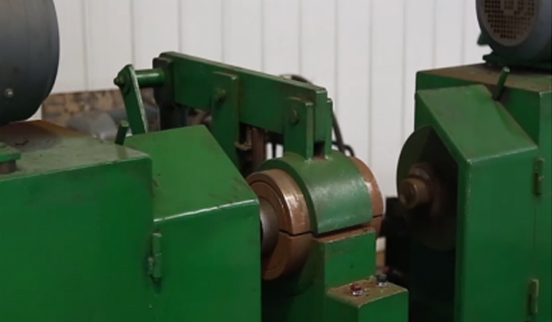 Afrikaans
Afrikaans  Albanian
Albanian  Amharic
Amharic  Arabic
Arabic  Armenian
Armenian  Azerbaijani
Azerbaijani  Basque
Basque  Belarusian
Belarusian  Bengali
Bengali  Bosnian
Bosnian  Bulgarian
Bulgarian  Catalan
Catalan  Cebuano
Cebuano  Corsican
Corsican  Croatian
Croatian  Czech
Czech  Danish
Danish  Dutch
Dutch  English
English  Esperanto
Esperanto  Estonian
Estonian  Finnish
Finnish  French
French  Frisian
Frisian  Galician
Galician  Georgian
Georgian  German
German  Greek
Greek  Gujarati
Gujarati  Haitian Creole
Haitian Creole  hausa
hausa  hawaiian
hawaiian  Hebrew
Hebrew  Hindi
Hindi  Miao
Miao  Hungarian
Hungarian  Icelandic
Icelandic  igbo
igbo  Indonesian
Indonesian  irish
irish  Italian
Italian  Japanese
Japanese  Javanese
Javanese  Kannada
Kannada  kazakh
kazakh  Khmer
Khmer  Rwandese
Rwandese  Korean
Korean  Kurdish
Kurdish  Kyrgyz
Kyrgyz  Lao
Lao  Latin
Latin  Latvian
Latvian  Lithuanian
Lithuanian  Luxembourgish
Luxembourgish  Macedonian
Macedonian  Malgashi
Malgashi  Malay
Malay  Malayalam
Malayalam  Maltese
Maltese  Maori
Maori  Marathi
Marathi  Mongolian
Mongolian  Myanmar
Myanmar  Nepali
Nepali  Norwegian
Norwegian  Norwegian
Norwegian  Occitan
Occitan  Pashto
Pashto  Persian
Persian  Polish
Polish  Portuguese
Portuguese  Punjabi
Punjabi  Romanian
Romanian  Russian
Russian  Samoan
Samoan  Scottish Gaelic
Scottish Gaelic  Serbian
Serbian  Sesotho
Sesotho  Shona
Shona  Sindhi
Sindhi  Sinhala
Sinhala  Slovak
Slovak  Slovenian
Slovenian  Somali
Somali  Spanish
Spanish  Sundanese
Sundanese  Swahili
Swahili  Swedish
Swedish  Tagalog
Tagalog  Tajik
Tajik  Tamil
Tamil  Tatar
Tatar  Telugu
Telugu  Thai
Thai  Turkish
Turkish  Turkmen
Turkmen  Ukrainian
Ukrainian  Urdu
Urdu  Uighur
Uighur  Uzbek
Uzbek  Vietnamese
Vietnamese  Welsh
Welsh  Bantu
Bantu  Yiddish
Yiddish  Yoruba
Yoruba  Zulu
Zulu Types and Functions of Conveyor Pulleys in Material Handling Systems
Understanding Conveyor Pulley Types
Conveyor systems are integral to various industries, streamlining the movement of materials and products. At the core of these systems are conveyor pulleys, which play a crucial role in supporting the conveyor belt and facilitating its movement. This article delves into the different types of conveyor pulleys, their functions, and the applications in which they are most effective.
What are Conveyor Pulleys?
Conveyor pulleys are cylindrical units positioned at the ends of a conveyor belt system, as well as at various points along the belt. They are essential for the transfer of power, the redirection of the belt, and the tensioning of the system. Typically made from steel or aluminum, these pulleys come in various sizes and designs to accommodate different types of belts and operational requirements.
Types of Conveyor Pulleys
1. Drive Pulleys Drive pulleys are located at the conveyor’s head and receive power from a motor. They are designed to provide the necessary friction to move the belt effectively. These pulleys are pivotal in initiating belt movement and controlling the speed of the conveyor system. They often feature a lagging surface to enhance grip and reduce slippage.
2. Return Pulleys Positioned on the return side of the conveyor belt, return pulleys help support the belt as it travels back to the starting point. They ensure that the belt maintains its alignment and proper tension, preventing excessive wear. Return pulleys are usually smooth and do not require extensive features, focusing more on support rather than motion.
conveyor pulley types

3. Tail Pulleys Located at the opposite end of the drive pulley, tail pulleys are crucial for returning the belt. They can also help in adjusting the tension of the conveyor system. Tail pulleys are subject to wear and tear due to their position in the system and often have a durable coating to withstand the abrasive materials they may encounter.
4. Belt Tensioning Pulleys These pulleys are used to adjust the tension of the conveyor belt effectively. Proper tension is essential for optimal performance, as it reduces slippage and enhances the lifespan of the belt. Tensioning pulleys can be fixed or adjustable, depending on the design of the conveyor system.
5. Wing Pulleys Wing pulleys have a unique design featuring two or more wings that allow for better material release as the belt moves. These are particularly useful in heavy-duty applications where materials may cling to the pulley surface, potentially causing blockages. The wings facilitate self-cleaning, reducing maintenance efforts.
6. Idler Pulleys Idler pulleys are non-powered pulleys that support and stabilize the conveyor belt along its path. They guide the belt and are placed strategically to maintain the belt's alignment and prevent sagging. Idler pulleys can take on various designs, including flat or crowned configurations.
Applications and Considerations
Choosing the right type of conveyor pulley is essential for the efficiency and longevity of the conveyor system. Factors such as the type of materials being transported, environmental conditions, and overall system design play a crucial role in this decision. Industries ranging from mining and manufacturing to food processing rely on these components to maintain productivity.
In conclusion, conveyor pulleys are vital components within conveyor systems, each serving a specific function. Understanding the different types of pulleys and their applications can significantly enhance the efficiency of material handling operations. By selecting the appropriate pulleys, businesses can ensure smoother operations, reduced downtime, and ultimately, higher productivity levels.
-
Revolutionizing Conveyor Reliability with Advanced Rubber Lagging PulleysNewsJul.22,2025
-
Powering Precision and Durability with Expert Manufacturers of Conveyor ComponentsNewsJul.22,2025
-
Optimizing Conveyor Systems with Advanced Conveyor AccessoriesNewsJul.22,2025
-
Maximize Conveyor Efficiency with Quality Conveyor Idler PulleysNewsJul.22,2025
-
Future-Proof Your Conveyor System with High-Performance Polyurethane RollerNewsJul.22,2025
-
Driving Efficiency Forward with Quality Idlers and RollersNewsJul.22,2025





























